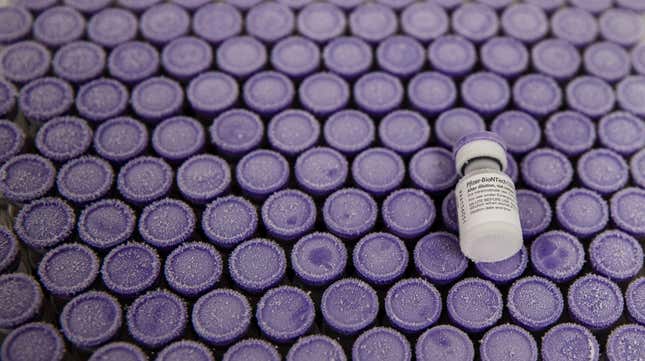
A plan meant to speed up the delivery of covid-19 vaccines to the American public is already facing trouble. On Friday, Oregon governor Kate Brown tweeted that the state won’t be getting additional vaccine shipments as expected next week, because the federal government had shipped out its remaining reserves earlier than advertised. Other states have reported being similarly deceived by the administration’s promise to release stockpiled doses.
A week ago, the incoming Biden administration announced that it would implement a new strategy for vaccine distribution to states. Previously, the government had stockpiled about 50% of available doses, in an effort to ensure that people would have a second dose available a month after their first. Biden’s plan would instead release of all or nearly all vaccine doses available, relying on the production supply chain of vaccines to match demand without causing any major shortages. Four days after the Biden team’s announcement, the Trump administration said that it would change its current strategy and release the stockpile.
However, on Friday, the Washington Post reported that the federal stockpile was already running dry by the time Health and Human Services Alex Azar announced the move. According to the Post, the administration had largely stopped stockpiling doses by the end of last year but never made the change public. The last reserves of both the Pfizer/BioNTech vaccine and Moderna vaccine were shipped out to states this past weekend, a HHS representative told the Post.
This confusion doesn’t necessarily mean that states will face vaccine shortages as a result. However, health officials in Oregon and elsewhere assumed that they would be receiving more doses than before and crafted their upcoming plans for distribution around that reasonable assumption. This included broadening the groups who were eligible to receive the vaccine, such as those over age 65 and certain people with certain risk factors. Now, for the foreseeable future, states won’t be getting any real surge in vaccine doses.
“This is a deception on a national scale,” Governor Brown said on Twitter. “Oregon’s seniors, teachers, all of us, were depending on the promise of Oregon’s share of the federal reserve of vaccines being released to us.”
Some experts have supported the plan to end or largely reduce the vaccine stockpile, arguing that as long as the production of doses remains stable, it should allow more people to be fully vaccinated. And so far, there haven’t been major concerns about the manufacturing of doses. The problems with distribution also run deeper than raw supply, with many states still struggling to quickly distribute the doses they already have.
Whatever the reasons, though, the slow vaccine rollout continues, with only around 10 million people in the U.S. having received at least one dose as of Thursday. On Friday, New York City mayor Bill de Blasio warned that the city would run out of covid-19 vaccines by next week due to supply constraints. New York Governor Andrew Cuomo announced that same day that the state had received 50,000 fewer doses this week than last (Cuomo’s administration has made its own mistakes with vaccine distribution).
On Thursday, the incoming Biden administration unveiled its latest $1.9 trillion pandemic relief plan for the country, which calls for $20 billion to be funded towards a national vaccine program, along with $350 billion in local and state aid (it also calls for an additional $1,400 in stimulus checks). Much if not all of the agenda is likely to be passed into law, given Democratic control of the House and tiebreaker power over the Senate. But if this latest communication fiasco shows anything, it’s that the mess on our hands is going to take a lot to fix.